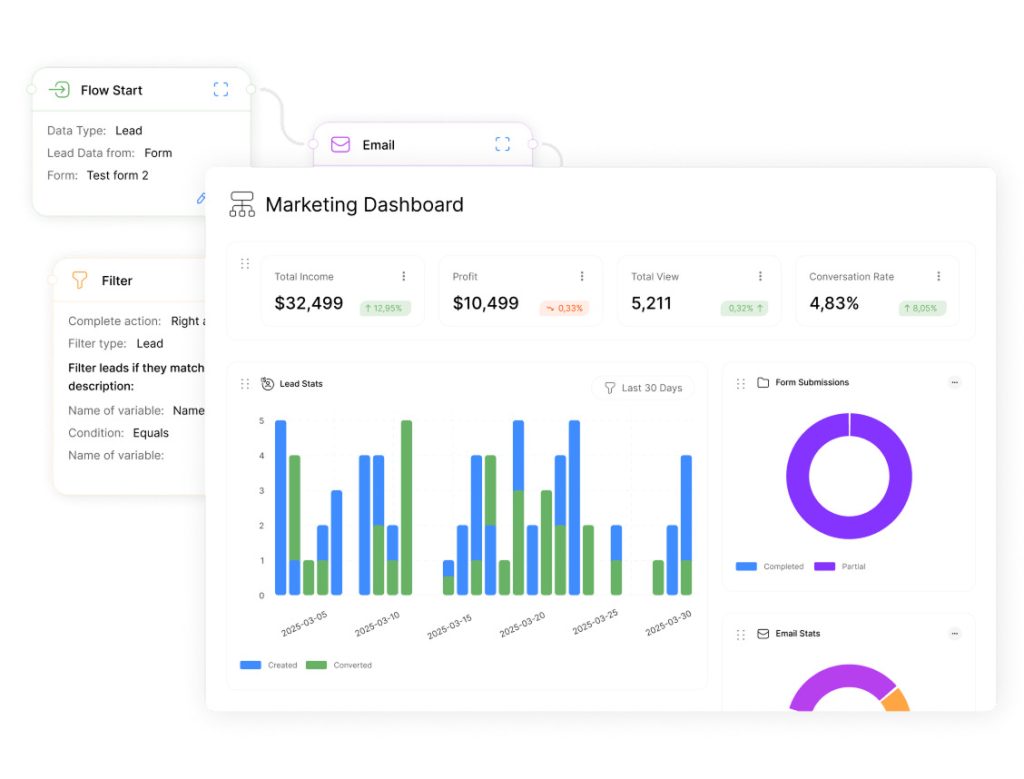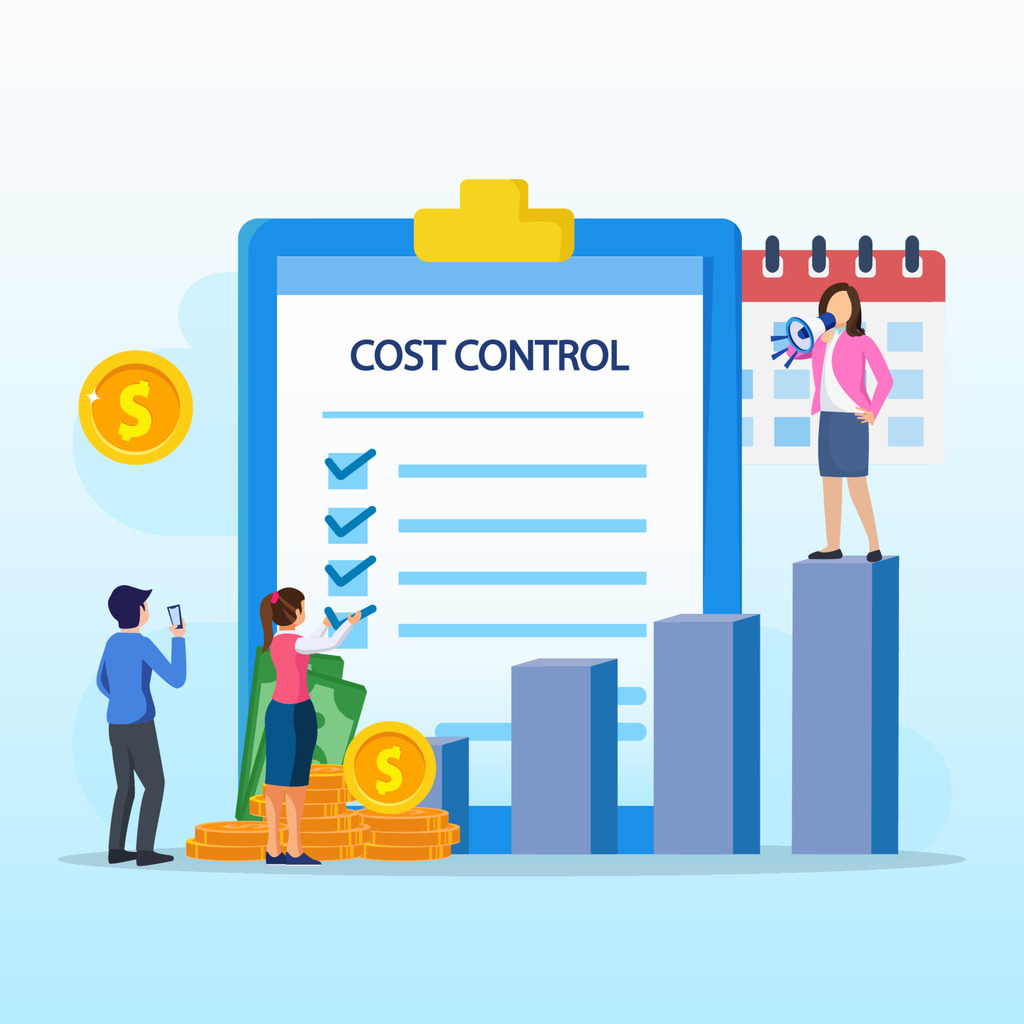Boost Sales Efficiency with Opportunity Tracking

Modern companies operate in fast-paced markets where every potential deal impacts growth. To stay ahead, teams need tools that turn pipeline visibility into actionable insights. Structured monitoring of deals isn’t just helpful—it’s critical for hitting targets and driving consistent revenue.
High-performing organizations rely on systematic oversight to prioritize efforts and allocate resources effectively. When sales professionals see which deals are progressing—and which need attention—they eliminate wasted time. Data-driven decisions replace assumptions, sharpening focus on high-value prospects.
Advanced tracking methods also transform forecasting accuracy. Leaders gain real-time insights into conversion probabilities, reducing risks tied to guesswork. This precision enables teams to proactively address bottlenecks before they derail progress.
Companies adopting these systems often report measurable gains in operational efficiency. Streamlined workflows minimize administrative tasks, letting teams dedicate energy to closing deals. The result? Predictable growth and stronger competitive positioning in any market.

Key Takeaways
- Pipeline visibility directly impacts revenue consistency and team performance.
- Data-driven prioritization reduces wasted effort on low-potential deals.
- Accurate forecasting relies on real-time updates about deal progression.
- Structured processes improve operational efficiency by up to 34% in documented cases.
- Growth-focused businesses treat deal monitoring as core infrastructure, not optional software.
Introduction to Opportunity Tracking Services
Visualizing the buyer’s journey is no longer optional for revenue-driven organizations. Structured oversight of prospects ensures teams align efforts with high-impact activities. This approach transforms scattered interactions into measurable outcomes.
Defining the Sales Process and Pipeline
A sales pipeline acts as a roadmap, displaying where prospects stand from initial contact to closed deals. Modern sales processes break this journey into stages—awareness, evaluation, and decision-making. Companies often manage multiple pipelines to handle diverse products or customer segments without overlap.
Why Tracking Matters for Business Growth
Visibility into deal progression eliminates guesswork. Teams spot stalled prospects early and redirect resources to high-potential leads. Metrics like conversion rates expose inefficiencies, allowing swift corrections. For example, a 20% drop at the negotiation stage might signal pricing strategy issues.
Consistent monitoring also builds accountability. Sales professionals focus on advancing deals rather than administrative tasks. Managers gain data to coach teams effectively, ensuring everyone contributes to revenue targets. These systems turn reactive workflows into proactive growth engines.
Understanding Opportunity Tracking
Mastering sales processes requires fluency in specialized terminology that drives results. Clear definitions create alignment across teams while ensuring consistent application of best practices.
Core Concepts and Key Terminology
CRM platforms act as centralized hubs where sales professionals document prospect interactions. These systems standardize how teams categorize deals based on factors like budget confirmation or decision-maker access. For example, a “qualified opportunity” refers to prospects with verified needs and authority to purchase.
Effective tracking relies on uniform data logging. Every customer touchpoint—from discovery calls to contract reviews—feeds into performance analysis. This approach reveals patterns in buyer behavior, such as seasonal demand spikes or common objections during negotiations.
Key metrics include conversion probabilities and deal timelines. Teams use these indicators to prioritize efforts and forecast revenue accurately. When sales pipelines reflect real-time updates, managers identify bottlenecks faster—like stalled negotiations requiring pricing adjustments.
Historical records within CRM databases empower strategic decisions. Analyzing past interactions helps refine product positioning and tailor outreach strategies. A systematic approach transforms raw data into actionable insights, ensuring teams focus on high-impact activities.
Key Features of Opportunity Tracking Software
Sales teams thrive when equipped with tools that simplify complex processes. Modern software transforms scattered workflows into cohesive strategies through two core elements: visual clarity and adaptive automation. These solutions eliminate manual guesswork while ensuring teams focus on high-impact actions.

Pipeline Visibility and Engagement Oversight
A dynamic view of sales pipelines acts as a command center for managers. Graphical interfaces display deal stages, from initial contact to final negotiation. Real-time updates highlight:
- Pending customer interactions (calls, meetings, document sharing)
- Stalled deals requiring immediate attention
- Conversion probabilities based on historical data
This transparency lets teams prioritize efforts without wasting time on low-potential prospects. Activity logs automatically record every touchpoint, creating auditable trails for performance reviews.
Tailored Processes and Intelligent Automation
Top-tier systems adapt to unique business needs through customizable workflows. Sales leaders can:
- Design stage-specific tasks triggered by deal progression
- Set reminders for follow-ups or contract renewals
- Integrate with email platforms and calendar apps
Automated alerts reduce administrative burdens, ensuring reps never miss critical activities. Prebuilt templates standardize best practices across teams while allowing flexibility for niche markets. The result? Consistent execution and faster deal closures.
Enhancing Your Sales Process with CRM Integration
Businesses today need more than basic tools to manage customer relationships. Integrating CRM systems with sales workflows unlocks strategic advantages that drive measurable results. By connecting fragmented processes, teams eliminate inefficiencies while building a foundation for scalable growth.
Centralized Customer Data for Better Decision-Making
Modern CRM integration transforms how companies store and use critical customer information. Platforms like Zoho CRM consolidate sales collateral, communication histories, and purchase records into a single interface. This unified approach ensures teams access up-to-date details without digging through emails or spreadsheets.
| Feature | Traditional Systems | CRM-Integrated Solutions |
|---|---|---|
| Data Access | Scattered across platforms | All information in one place |
| Collaboration | Manual file sharing | Real-time document updates |
| Accuracy | Frequent version errors | Automated sync across teams |
A sales manager using Zoho CRM shared:
“Having every client’s history at our fingertips cut meeting prep time by 40%. We now personalize pitches using past interactions stored in the system.”
Integrated systems also empower targeted marketing. Sales teams analyze purchase patterns to segment audiences effectively. Campaigns become more relevant, boosting engagement rates. For example, a company might identify seasonal demand spikes through historical data and adjust outreach timing accordingly.
Real-time updates prevent miscommunications during negotiations. When all stakeholders see the same contract terms or pricing adjustments, deals close faster. This transparency builds trust internally and with clients.
Managing Your Sales Pipeline Effectively
Sales leaders recognize that pipeline clarity separates thriving teams from stagnant ones. Clear visibility into deal progression lets teams act decisively, turning potential into revenue. Tools like Prospect CRM’s Kanban view simplify this by displaying deals as movable cards across stages—from initial outreach to final negotiation.
Visualizing and Tracking Sales Stages
Kanban boards transform complex workflows into intuitive displays. Each card shows a deal’s current status, next steps, and ownership details. This visual approach helps teams identify bottlenecks—like stalled contracts needing pricing adjustments—and redirect resources swiftly.
Stage-based strategies ensure reps apply the right tactics at each phase. Early-stage prospects might require educational content, while late-stage deals benefit from personalized demos. Managers gain real-time insights to coach teams on overcoming common hurdles, such as prolonged approval cycles.
“Our Kanban board cut weekly status meetings by 50%,” notes a sales director at a tech firm. “Everyone instantly sees which deals need focus, so we spend less time talking and more time closing.”
Progress monitoring tools highlight deals at risk of slipping. Automated alerts remind reps to follow up on proposals or share additional materials. These nudges keep prospects moving forward without manual oversight.
Accurate forecasting hinges on visual timelines showing expected close dates. Teams adjust strategies if multiple deals cluster in later stages, ensuring consistent revenue flow. Systematic stage management also standardizes best practices, boosting conversion rates by aligning efforts across departments.
Leveraging Data Analytics for Sales Growth
Forward-thinking organizations now treat data as their most valuable currency. By analyzing patterns in customer behavior and deal progression, teams replace guesswork with precision. Modern CRM platforms turn raw numbers into strategic roadmaps, revealing what drives results—and what holds teams back.
Using Insights to Identify and Resolve Bottlenecks
Advanced analytics engines process millions of data points to spotlight hidden trends. A manufacturing company, for instance, discovered 62% of stalled deals lacked decision-maker access early in negotiations. This insight prompted earlier executive engagement, boosting close rates by 27% in one quarter.
Bottlenecks become obvious when visual dashboards highlight stages with abnormal drop-offs. Teams can then:
- Reallocate resources to high-friction areas
- Adjust messaging based on historical win/loss patterns
- Predict quarterly results within 5% accuracy margins
“Our analytics dashboard exposed a critical gap in post-demo follow-ups,” shares a SaaS sales VP. “Automating those touchpoints recovered $380k in potential lost revenue last year.”
Predictive models also help anticipate market shifts before they impact pipelines. When sales teams combine real-time insights with historical benchmarks, they create self-correcting systems. Campaigns automatically pivot based on engagement metrics, while managers gain objective criteria for coaching.
This analytical approach builds cultures where decisions stem from evidence, not hierarchy. Teams consistently refine strategies using performance information, ensuring every action aligns with measurable outcomes. The result? Sustainable growth powered by clarity, not chance.
Empowering Your Sales Team with Real-Time Insights
Sales success today demands tools that provide instant clarity on every deal. Pipeliner CRM’s Fitness feature revolutionizes how teams assess deal viability through color-coded health indicators. This system replaces manual updates with automated status checks, ensuring no critical detail slips through cracks.
Opportunity Fitness and Real-Time Updates
The Fitness algorithm evaluates three factors: scheduled activities, overdue tasks, and closing timelines. Green signals mean deals are progressing smoothly. Yellow flags missing follow-ups, while red alerts demand urgent action on expired deadlines. Managers gain instant visibility into which deals need support—without sifting through spreadsheets.
| Criteria | Traditional Methods | Pipeliner CRM |
|---|---|---|
| Deal Visibility | Manual status checks | Auto-updated color codes |
| Response Time | Hours to identify risks | Instant alerts |
| Coaching Efficiency | Reactive meetings | Data-driven guidance |
Utilizing Navigator for Immediate Action
Pipeliner’s Navigator dashboard consolidates tasks, deadlines, and deal specifics into one screen. Sales professionals see overdue activities first, enabling swift corrections. A tech firm using this CRM solution for sales teams reported 31% faster response times to stalled negotiations.
“Navigator lets us spot burning issues before weekly syncs. We’ve reclaimed 12 hours monthly previously spent on status reports.”
Real-time insights transform how teams prioritize efforts. With fitness indicators and centralized dashboards, sales leaders build cultures of proactive problem-solving rather than reactive firefighting.
Integrating Opportunity Tracking with Marketing Strategies
Breaking down silos between departments accelerates revenue growth. When sales and marketing teams share real-time insights, they create unified customer journeys that drive conversions. Modern CRMs like Prospect bridge this gap by tracking prospects from first website visits to signed contracts.
Aligning Sales and Marketing Efforts for Greater Impact
Shared data eliminates friction in lead transitions. Marketing teams using targeted campaign tools can automatically route qualified prospects to sales reps. This ensures timely follow-ups while maintaining consistent messaging across channels.
| Challenge | Traditional Approach | CRM-Integrated Solution |
|---|---|---|
| Lead Handoff | Manual email alerts | Auto-assign based on lead score |
| Data Sharing | Monthly Excel exports | Real-time dashboard sync |
| Campaign Analysis | Guesswork attribution | Closed-loop revenue reporting |
Coordinated strategies yield measurable improvements. A SaaS company reduced lead response times from 48 hours to 19 minutes after integration. Their marketing team refined ad spend based on which leads actually converted, boosting ROI by 41%.
“Seeing which marketing-qualified leads became customers transformed our budget decisions. We cut underperforming channels and doubled down on high-conversion platforms.”

Three critical benefits emerge from alignment:
- Marketing materials address specific sales-stage needs
- Lead scoring models improve using actual conversion data
- Campaign performance ties directly to revenue metrics
This synergy turns marketing efforts into sales accelerators. Teams eliminate redundant tasks while focusing on activities proven to attract ideal customers.
Benefits of Our Opportunity Tracking Solutions
Tailored solutions separate industry leaders from competitors in today’s dynamic markets. Companies need systems that adapt to their evolving needs while maintaining precision across every deal. The right tools transform scattered efforts into cohesive strategies that deliver measurable outcomes.
Customization, Scalability, and Efficiency Gains
Flexible configurations let businesses align software with existing workflows and industry demands. Sales teams maintain their unique methodologies while benefiting from automated oversight. This balance ensures rapid adoption without disrupting proven processes.
Scalable architectures support growth seamlessly. Whether handling 50 deals or 5,000, performance remains consistent. Expanding teams add users or modules effortlessly, avoiding costly platform migrations as needs change.
Standardized processes cut wasted time by eliminating redundant tasks. Automated reminders and unified data entry protocols keep everyone focused on high-impact activities. One logistics firm reduced administrative work by 40% within three months using these features.
Strategic value emerges when systems highlight trends in customer behavior. Teams identify repeat buyers and tailor retention strategies using historical data. This approach maximizes lifetime value while fostering long-term partnerships.
By converting informal practices into structured systems, organizations gain clarity across operations. Decision-makers access real-time metrics to allocate resources where they’ll impact revenue most. The result? Sustainable growth powered by informed choices, not guesswork.

